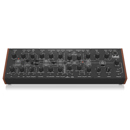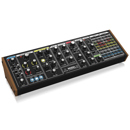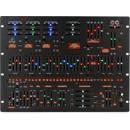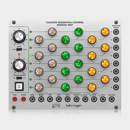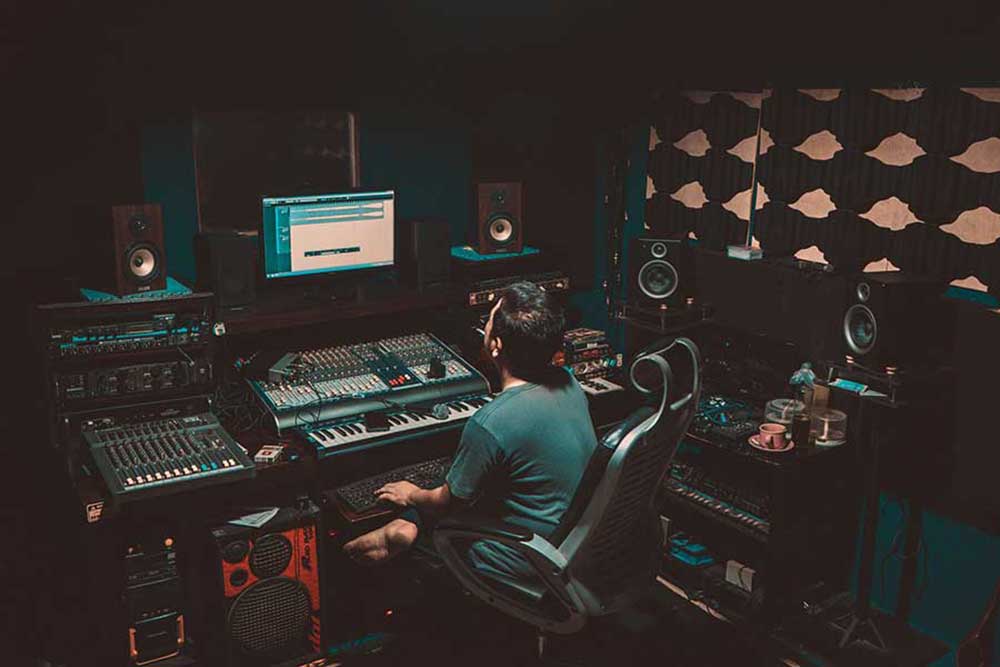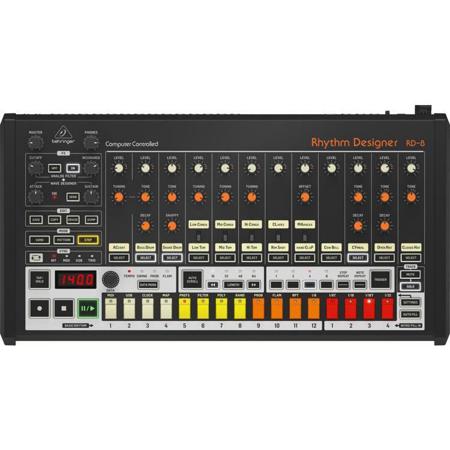
Behringer Rhythm Designer RD-8 Classic Analog Drum Machine with 16 Drum Sounds, 64 Step Sequencer, Wave Designer and Dual-Mode Filter
SKU: BERHYTHMDRD8
This item is no longer available.
Recommended Alternatives
Share:
Overview
Compare
Specs
Protection
Reviews about this item
Review Summary
Select a plan in the Add Protection section above and purchase with this product by clicking “Add to Cart”.
TRUSTED PROTECTION PLANS, EXCEPTIONAL SERVICE.
Invest In Your Gear and Peace Of Mind!
Accidents happen where life happens. Protect your favorite Adorama products and purchase a protection plan to stay covered from accidental damage, mechanical or electrical failure, and more.
Repair or Replacement
If we can’t fix it, we’ll replace it at no additional cost.
Accidental Damage
Protect your product from drops, spills, and more.
Peace of Mind
Enjoy your gear without fear. We have you covered!
Malfunction Protection
When regular use of your product over time results in mechanical or electrical failure.
Zero Deductible
We will never charge you a deductible after the purchase of a plan.
Customer-Focused Support
Our claims process is simple & easy and our customer service team is happy to help.
Adorama Protect powered by Extend is available for purchase to customers in the United States. Not available for purchase Internationally or in U.S. Territories.
Browse our FAQ
Behringer Rhythm Designer RD-8 Specifications
Voices
Number of Sounds: 16
Type: Analog
Number of Simultaneous Voices: 11 (12 Including Global Accent)Sound Control Feature
Accent: Level
Bass Drum: Level, Tone, Decay, Tuning
Snare Drum: Level, Tone, Snappy
Low, Mid, Hi Conga / Low, Mid, Hi Tom: Level, Tuning, Voice Selection
Claves / Rim Shot: Level, Voice Selection
Maracas / Hand Clap: Level, Offset, Voice Selection
Cow Bell: Level
Cymbal: Level, Tone, Decay
Open Hat: Level, Tone, Decay
Closed Hat: Level, Tone
Select Buttons: 16 Voice Select ButtonsConnectivity
Outputs:
Phones: 1 x 1/4" / 6.35 mm TRS, Stereo, 8 Ohm Impedance
Mono: 1 x 1/4" / 6.35 mm TRS, Servo-Balanced
Voice Out: 11 x 1/4" / 6.35 mm TS, Unbalanced
MIDI In, Out, and Thru: 3 x 5-Pin DIN
Trigger Outs: 3 x +5 V, 1 ms Pulse
Clock In / Out: 2 x 1/8" / 3.5 mm TS
USB: Class Compliant USB 2.0, Type-BConnectivity (Contd.)
Supported Operating Systems:
Windows 7 or Higher
Mac OS X 10.6.8 or Higher
Volume Controls: Master, Phones
Return (Input): 1 x 1/4" / 6.35 mm TRS, BalancedDesigner
Wave Designer:
Bus: 11 Voices, Independently Assignable
Controls:
Attack: -15 to +15 dB, Adjustable
Sustain: -24 to +24 dB, Adjustable
Send Button: On/Off, Switchable
Sig LED: RedAnalog Filter
Type: State Variable, 12 dB Slope
Cutoff: 10 Hz to 15 kHz, Adjustable
Resonance: 0 to 10, Adjustable
HPF Button: LPF / HPF Mode, Switchable
On Button: On / Off, SwitchableSync
Mode Selector: Internal / MIDI / USB / Clock, Selectable
Sequencer
Edit Buttons: Save, Copy, Erase, and Dump
Mode Buttons: Song, Pattern, and Step
Control: Encoder for Data Editing
Playback Controls: Tap / Hold, Record, Stop, Play / Pause
Data Mode: Tempo / Swing / Prob / Flam, Selectable
Auto Scroll: On / Off, Rewind, Length (16 / 32 / 48 / 64, Selectable), Fast ForwardSequencer (Contd.)
Trigger: On / Off, Repeat Division (1 / 2 / 4 / 8, Selectable), Step Repeat, Note Repeat
Track: Mute / Solo, Selectable
Step Buttons: 16-Step Enter ButtonsSettings
Enter Settings Mode, Use Step Buttons to Select Operation
Auto-Fill
Enter Autofill Selection Mode
Songs
Song Mode: Chain Any of the 16 Songs Together for Full Sets
Pattern
Capacity: 16 Songs, 16 Patterns Each
Pattern Mode: Up to 99 Iterations per Pattern/Part
Steps: 64 StepsPower Supply
External Power Adapter: 18 VDC, 1000 mA
Power Consumption: 15 W TypicalEnvironmental
41 Degree F to 104 Degree F (5 Degree C to 40 Degree C)
Dimensions (H x W x D)
3 x 19.6 x 10.4" (76.2 x 497.8 x 264.2mm)
Weight
6.6 lb (3kg)
UPC Code
653341343031
About Behringer Rhythm Designer RD-8
A Brief History of Drum Machines
From its humble beginnings as rhythmic support to organists, to later setting dance floors ablaze with unrelenting and hypnotic beats, the drum machine has been one of the most unappreciated of all musical inventions.
Uncompromising in its metronomic precision, the drum machine provides a flawless rhythm section that never tires of playing the same four-bar loop. However, when put into the right hands and proper musical context, they can be finessed to create awe-inspiring rhythmic artistry.
First Drum Machine - The Rhythmicon
The ground-breaking Rhythmicon was created by Russian inventor Leon Theremin in 1931. The machine was a collaboration with American composer Henry Cowell and can produce up to 16 different rhythms with a strikingly bleepy sound.
Chamberlin Rhythmate
The Rhythmate was a pioneering drum machine, which used tape loops to create rhythms to accompany an organ player. The machine had 14 tape loops with a sliding control that allowed playback of different tracks on each piece of tape that could be combined to create many variations.
Roland CompuRhythm CR-78
The CR-78 is a classic analog rhythm machine - and was the first to use a microprocessor. The 34 built-in patterns could be altered at the push of a button, providing the user significantly more creative control. As for the drum sounds, the CR-78 offers 14 very electronic, yet analog drum tones.
Sounds include Kick, Snare, Rim, Cow Bell, Hi-Hats, Cymbals, Congas, Bongos, Tambourine and Guiros. With 11 variation effects and the ability to adjust tempo, accents, and fade in/outs, the CR-78 is still capable of producing exquisite rhythms for use in ambient, hip hop and many other forms of music. One of the best-known uses of the CR-78 can be heard in Phil Collins' 1981 hit, "In the Air Tonight".
Roland TR-808 Rhythm Composer
In the worlds of techno, house, hip hop and R&B, the Roland TR-808 is an indispensable machine. Its signature sound, the booming bass drum that has created the groove of hits by everyone from Marvin Gaye to Afrika Bambaata to 808 state and is currently one of the most frequently used sounds in modern music.
Despite its current iconic status, when it was released in 1980, the 808 was not a top seller by any means. There were lots of people didn't like the simplistic sound in preference to more expensive machines such as the digitally-sampled LinnDrum.
However, producers in the underground acid-house music scene leaned towards the TR-808 and the entire Roland product line, including the TB-303, SH-101 and TR-909, giving these boxes their iconic status and modern day price tags to match.
Roland TR-909 Rhythm Composer
The TR-909 featured the sampled and analog drum sounds that have become synonymous with house and techno music. This programmable, step-sequenced drum machine was launched in 1983, and while it was not an instant commercial success, it soon gained an underground following. With DIN Sync24, MIDI In and Out, and individual outputs for each sound, the TR-909 could be integrated into any studio, and offers numerous controls for controlling each sound.
The TR-909 has been used by The Prodigy, The Chemical Brothers, Moby, Fatboy Slim, Orbital and Jean Michel Jarre. It would be hard to find a techno or house producer who hasn't used a TR-909 kick in a track at some point.
LinnDrum
The inspirational LinnDrum was created by Linn Electronics in 1982, using superior sounding samples that gave birth to a new generation of users who are synonymous with the sound of the '80s. The LinnDrum was used on countless classics tracks throughout the '80s, including hits by Prince, Tears for Fears and Madonna.
Oberheim DMX
Launched in 1981, the Oberheim DMX also used sampled sounds of real drums, individual tuning controls for each drum voice and a swing function to add a little groove. The controls gave the DMX the ability to emulate a real drummer via timing variations, rolls and flams to create a more human "feel". The DMX has 11 samples, which can be used to create 24 individual drum sounds and allows up to 8 voices simultaneously. It has 8 separate outputs for individual channel processing and holds up to 100 sequences and 50 songs.
The DMX's hard-hitting and convincing drum sound made it attractive to artists and producers in the burgeoning hip-hop culture, and it is featured on many of the scenes early innovative records. New Order used the DMX to great effect on their 1983 single, "Blue Monday" with its repeating bass drum pattern.
E-mu SP-1200
Released in 1987, the E-mu SP-1200 was quickly accepted into the hip hop world due to its limited bandwidth sampling rate, classic 4-pole filter and 12-bit sampling resolution. This all contributed to the unit's gravelly sounds, which have been feature on many hit recordings. The SP-1200's ability to build the main structure of a song within a single piece of gear (a first for the industry) cut hip-hop artists loose from the studio to perform live alongside the machine. Famous users include the Beastie Boys, The Prodigy and Daft Punk.
AKAI MPC60
The celebrated Akai MPC was designed by Roger Linn and produced by Akai from 1988 onwards. The MPC allowed artists to use new clever ways to manipulate small samples to create a completely new track. These snippets were often lifted from other records and thus started a new style of "Sound-Collage".
The original MPC60 only allowed sample lengths of up to 13 seconds. Sampling memory was expensive at the time, which steered people to sampling records at higher speeds in order to gain more time. The side effect was playback at a lower resolution, which contributed to the grittiness of the sound. Famous users include Kanye West, Dr. Dre and Mark Ronson.
RD-8
The RHYTHM DESIGNER RD-8 provides all the tools you need to become a master beat-maker, including: 16 drum sounds; a 64-step sequencer; Wave Designer and dual-mode filter - for a full-fledged drum machine that'll shake the house! Whether you're new to drum programming or a seasoned pro looking to upgrade your setup, the RD-8 has everything you need to step up to the big time.
Masterpiece Rejuvenated
Great care has been taken in designing the RD-8 to achieve new possibilities in beat creation by reviving a timeless analog design from one of the most-classic drum machines of yesteryear. By taking a fresh and modern approach on a classic drum machine, the RD-8 gives you the power to harness the phenomenal sound of the 808 and tap into some new features as well.
Colossal bass drums through to sizzling hi-hats can be manipulated to elevate your rhythm performance to the next level. This is an analog beat-making monster!
Live Performance Beat Master
Built to enhance the way you perform, the RD-8 boasts all-new features for live use in each of the sequencer modes including step repeat, note repeat, real-time triggering and live step-overdubbing. This makes it easy to enable recording in pattern launch mode, so you can build song structures on-the-fly and switch back to manual mode at the touch of a button.
Then you are free to add some excitement with the autofill feature and to introduce more variations. You can even cue up another song from memory without interrupting playback, allowing you to perform entire sets from start to finish - just using your RD-8!
Powerful & Feature-Rich Sequencer
The RD-8 features one of the most powerful step sequencers ever created, which provides much-improved workflows over the original. The 64-step sequencer also includes storage for up to 256 patterns and 16 songs, allowing the creation of song arrangements ranging from ultra-simple to incredibly complex.
Wave Designer & Dual-Mode Filter
The integrated Wave Designer has individual attack and sustain controls that can be applied to individual voices to bring another dimension to your drum beats. This provides yet another way to control sounds to build virtually unlimited - and awesome new tones.
Additionally, RD-8's highly-flexible dual-mode 12 dB filter button toggles between LPF and HPF, allowing you to experiment with the cutoff frequency and resonance controls to create out of this world beats. And those fluid sweeps can be recorded straight into the sequencer and further tweaked using the step editor.
Parameter Chaining
RD-8's robust encoder lets you set separate chain preferences for each of your parameters, allowing them to function globally or to switch on when a song or pattern changes. Parameters include tempo, swing, flam, probability, independent track mutes/solos, FX bus assignments, filter modes and sweeps for enhanced real-time control. Patterns can be changed on-the-fly for further creative control when using the RD-8 as the heart of your live setup.
USB Control
To bring the RD-8 into the modern age, USB connectivity has been added for sync and MIDI triggering. This enables the RD-8 to be controlled by your DAW if desired, allowing songs and patterns to be swapped or individual sounds to be triggered.
Behringer Rhythm Designer RD-8 Features
- Amazing drum machine with authentic analog sound engine to create the classic sound performance
- 16 original drum sounds with additional parameters and global Accent capability
- Modern and versatile workflow provides enhanced playability, enabling you to create captivating live performances
- Powerful 64-step drum sequencer supports poly-meter, step-repeat, note-repeat, real-time triggering, track-mute and track-solo
- Integrated FX bus features Wave Designer and dual-mode Analog Filter with per voice assignment
- Live recording, editing and playback of Analog Filter cutoff via automation
- Storage of up to 16 songs and 256 patterns, all of which can be imported/exported during playback for unlimited songs and patterns
- Pattern Mode allows arrangement of patterns into full songs and setting number of repeats per song part
- Song Mode allows chaining songs together for live sets and expanded compositions
- Unique Auto Scroll feature enables improvisation in all modes
- Comprehensive MIDI In/Out/Thru and USB implementation for synchronization and connection to external devices
- Sync options include USB, MIDI, Clock and Internal for maximum versatility
- 11 independent analog outputs for external processing or recording your rhythms as multi-track audio
- Powerful headphone and main outputs on 1/4" connectors
- High-visibility LED display makes it easy to verify program parameters
- Robust encoder for editing parameters such as Tempo, Swing, Probability, Flam and Random
- 16 vintage-style step buttons with bold LED indicators for easy pattern creation
- Designed and engineered in the U.K.
Key Features
- Amazing drum machine with authentic analog sound engine to create the classic sound performance
- 16 original drum sounds with additional parameters and global Accent capability
- Integrated FX bus features Wave Designer and dual-mode Analog Filter with per voice assignment
- Live recording, editing and playback of Analog Filter cutoff via automation
- Song Mode allows chaining songs together for live sets and expanded compositions
- Unique Auto Scroll feature enables improvisation in all modes
What's in the box:
- Rhythm Designer RD-8 Classic Analog Drum Machine with 16 Drum Sounds
- Power Supply
- Behringer 3 Year Limited Warranty
